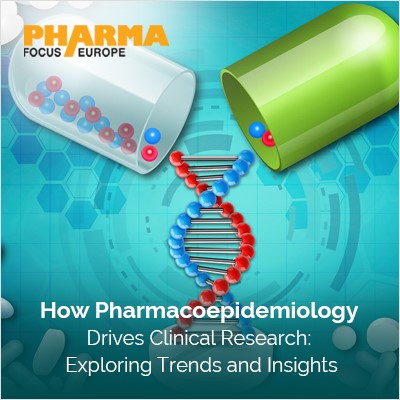
This paper delves into how pharmacoepidemiology influences clinical research through innovative pharmaceutical packaging. It highlights regulatory challenges such as tamper-proofing, child-resistant packaging, serialization, and sustainability. Innovative solutions like smart packaging, biodegradable materials, and nanotechnology are discussed, emphasizing improved safety, compliance, and user experience.

The pharmaceutical industry operates within a complex regulatory framework aimed at ensuring the safety, efficacy, and quality of medicinal products. One of the critical aspects of this regulatory landscape is packaging. Packaging serves as the frontline defense for pharmaceutical products, safeguarding them from environmental factors, contamination, and tampering. It is not just about enclosing medications; it's about ensuring that each dose reaches the patient in a safe and effective manner.
Importance of Regulatory Compliance in Pharma Packaging: Regulatory compliance in pharmaceutical packaging is not just a legal obligation; it's a fundamental commitment to public health and safety. Regulatory bodies like the FDA and EMA set stringent requirements to ensure that pharmaceutical companies adhere to best practices in packaging design, materials, labeling, and handling. These regulations are designed to minimize risks such as contamination, mislabeling, and unauthorized access, which can have severe consequences for patients and the industry as a whole.
Key Regulatory Challenges Faced by Pharma Companies:
Pharmaceutical companies face a myriad of regulatory challenges when it comes to packaging. One of the foremost challenges is ensuring tamper-evident packaging. This involves designing seals and closures that provide clear evidence if the package has been tampered with, thus protecting the integrity of the product. Child-resistant packaging is another critical area, especially for medications that pose a risk of accidental ingestion by children. These packages are designed to be difficult for young children to open while remaining accessible to adults.
Serialization and track & trace requirements have become increasingly important in combating counterfeit drugs and ensuring supply chain integrity. Pharmaceutical companies must implement systems that enable the tracking of products at every stage, from manufacturing to distribution to the end user. This not only helps in maintaining regulatory compliance but also builds trust among consumers who can verify the authenticity of the products they use.
Environmental sustainability is a growing concern in the pharmaceutical industry. Regulatory bodies are placing greater emphasis on reducing the environmental impact of packaging materials. This includes using recyclable materials, minimizing packaging waste, and exploring biodegradable alternatives. Meeting these sustainability standards while ensuring product safety and regulatory compliance presents a significant challenge for companies.
Innovative Solutions to Regulatory Challenges:
In response to these regulatory challenges, pharmaceutical companies are turning to innovative packaging solutions. Smart packaging technologies, such as RFID tags and QR codes, are revolutionizing supply chain management by providing real-time visibility and traceability. These technologies enable companies to track products, monitor storage conditions, and prevent counterfeiting, ultimately enhancing regulatory compliance and consumer safety.
Biodegradable materials offer a sustainable alternative to traditional packaging materials. Bioplastics derived from renewable sources can reduce environmental impact and meet regulatory requirements for eco-friendly packaging. Additionally, interactive packaging features, such as digital medication reminders and dosage tracking apps, are improving patient adherence and medication management, leading to better health outcomes.
Nanotechnology plays a crucial role in enhancing the barrier properties of packaging materials. Nanomaterials can create protective layers that prevent moisture, oxygen, and light from degrading pharmaceutical products. This extends shelf life, maintains product stability, and ensures that medications retain their efficacy throughout their lifecycle.
Benefits of Innovative Packaging Solutions:
The adoption of innovative packaging solutions offers numerous benefits to pharmaceutical companies and consumers alike. Firstly, it enhances regulatory compliance by incorporating advanced technologies and sustainable practices. This not only meets current regulatory standards but also prepares companies for future regulatory changes and advancements in packaging requirements.
Enhanced safety and security are paramount benefits of innovative packaging solutions. Tamper-evident seals, child-resistant features, and track & trace capabilities provide assurance that products are genuine, unaltered, and safe for consumption. This builds trust among consumers and reduces the risk of counterfeit products entering the market. Environmental responsibility is another significant advantage. By using biodegradable materials and minimizing packaging waste, pharmaceutical companies demonstrate their commitment to sustainability. This aligns with consumer preferences for eco-friendly products and contributes to a healthier planet.
Interactive packaging features improve the user experience and promote medication adherence. Patients can receive reminders, access dosage information, and track their medication usage, leading to better treatment outcomes and reduced healthcare costs. Overall, innovative packaging solutions not only address regulatory challenges but also drive business growth, customer satisfaction, and positive social impact.
In conclusion, navigating regulatory challenges in pharmaceutical packaging requires a proactive approach that embraces innovation and sustainability. By leveraging smart technologies, biodegradable materials, interactive features, and nanotechnology, pharmaceutical companies can overcome regulatory hurdles while enhancing product safety, security, and user experience. Investing in innovative packaging solutions is not just a regulatory necessity; it's a strategic imperative that fosters trust, sustainability, and competitiveness in the dynamic pharmaceutical industry.